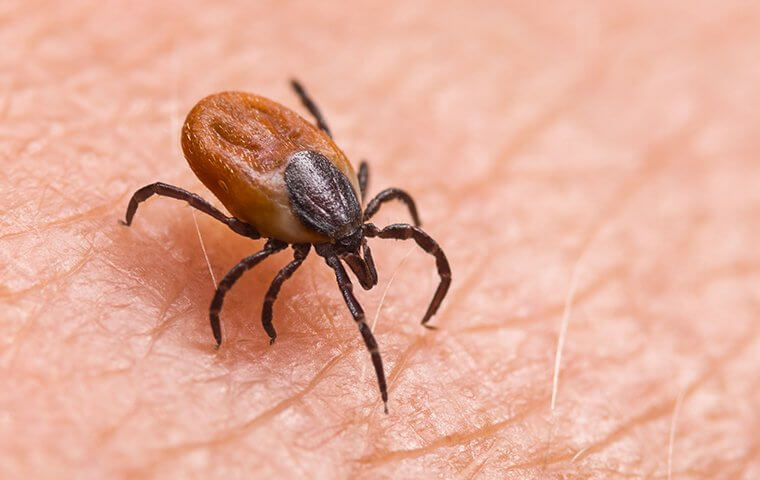
While not proven, ticks may very well have written the hitchhikers guide to the galaxy, because they are exceptionally talented at hitching rides on unsuspecting prey, which they then vampirically consume their blood.

Ticks are small yet mighty creatures of the arachnid family. Ticks are scattered across the globe, ranging in size from 1/8-inch to 1/4-inch long. These little vampires are easily identifiable with their hard, segmented bodies. Their color can vary but typically lands on shades of brown or black - and red when they’ve recently fed upon a host.
Contrary to popular belief, ticks are not able to jump. They instead find their way onto a host by sitting atop tall grass, waiting for a host to walk and brush by them so that they can latch on to the host and begin feeding. Once attached, ticks can feed for hours and even days.
The life of a tick revolves around a parasitic lifestyle, their diet primarily composed of the blood of their unsuspecting hosts, which can include both animals and humans. Using their mouthparts, ticks secure themselves to their hosts and can transmit various diseases, including Lyme disease, Rocky Mountain spotted fever, and tularemia.
Especially active during spring and summer months, ticks are nature’s tiny hitchhikers you'd definitely rather not pick up. Much like mosquitoes, ticks can zero in on the heat and exhaled carbon dioxide of a suitable host.
What’s more terrifying is that some ticks can go as long as a year without feeding on something.
Don’t let their size fool you - ticks are hardy and can inhabit a wide range of environments, from forests and grasslands to our own backyards. They especially love areas with tall grass, leaf litter, and brush, a perfect setting to latch onto a passing host.
The risks associated with ticks extend beyond mere skin irritation and allergic reactions. They're notorious for transmitting diseases, adding a health hazard factor that we can't ignore. In fact, ticks are capable of transmitting diseases even if they are not already full from something else’s blood.
Because of this, it is imperative that you remove a tick as soon as possible, but you need to be careful to remove their head and this can be rather difficult.
To shield ourselves, it's wise to wear long sleeves and pants, use tick repellents when venturing into areas where ticks might be present, and routinely check for any uninvited ticks after outdoor activities.
If ticks have taken up residence, you might need to engage a professional pest control company. They use various methods to treat ticks, including:
Ticks hitch a ride into our homes by clinging onto our clothing or pets. They can also be brought in by rodents or other animals.
Look out for small, eight-legged arachnids, about 1/8-inch to 1/4-inch long, typically brown or black. You may notice a hard, segmented body, and they might be attached to their host with their mouthparts.
Some signs of a flea or tick infestation include seeing flea dirt (black, pepper-like substance that fleas leave behind), flea bites which are small red bumps that are incredibly itchy. Ticks on the other hand are going to be small (or large depending on feeding stage) brown insects that can be attached to you or your pet’s skin. You may also notice hair loss and anemia in severe infestations.
Some common methods to get rid of fleas and ticks on your pet include using a flea and tick shampoo when you wash them, giving them a flea and tick collar, applying a topical flea and tick treatment, vacuuming your home regularly, and treating your yard.
Controlling ticks effectively often necessitates professional intervention. Pest control companies use an assortment of techniques based on the severity of the infestation and the type of ticks involved.
Insecticide sprays are a go-to solution, killing ticks on contact. Meanwhile, tick control products work to repel ticks, making it difficult for them to attach to potential hosts.
In severe cases, fumigation might be required. This process involves using a gas to annihilate ticks within an enclosed space. It’s important that you work with professionals to follow all necessary steps and precautions for this treatment.
Remember, each infestation is unique, and a professional pest control company can determine the best treatment method for your specific situation.


Newsletter
Sign up for updates and news at Aruza
©20xx Aruza. All Rights Reserved.